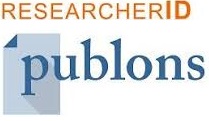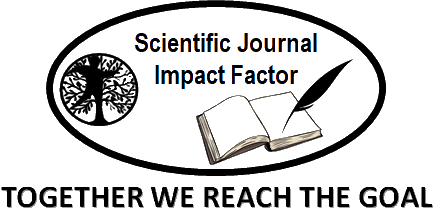Promotion of Sharia-Compliant Hotels Through Digital Media: A Halal Marketing Approach
Abstract
Keywords
Full Text:
PDFReferences
BPS, “Penduduk Menurut Kelompok Umur dan Agama yang Dianut, INDONESIA,” 2023. [Online]. Available: https://sensus.bps.go.id/topik/tabular/sp2010/11/0/0
Kemenparekraf, “Statistik Pariwisata Indonesia 2022,” 2022. [Online]. Available: https://www.kemenparekraf.go.id/statistik-pariwisata-dan-ekonomi-kreatif
H. Oktadiana, P. L. Pearce, and K. Chon, “Muslim travellers’ needs: What don’t we know?,” Tour. Manag. Perspect., vol. 20, pp. 124–130, Oct. 2016, doi: 10.1016/j.tmp.2016.08.004.
Mastercard-Crescentrating, “Global Muslim Travel Index 2022 Report,” 2022. [Online]. Available: https://www.crescentrating.com/reports/global-muslim-travel-index-2022.html
Mastercard-Crescentrating, “The Halal Travel Frontier 2022: Shaping the Future of Muslim-Friendly Travel,” 2022. [Online]. Available: https://www.crescentrating.com
M. L. Stephenson, “Deciphering ‘Islamic hospitality’: Developments, challenges and opportunities,” Tour. Manag., vol. 40, no. February 2014, pp. 155–164, 2014, doi: 10.1016/j.tourman.2013.05.002.
H. De Jaegher and E. Di Paolo, “Participatory sense-making,” Phenomenol. Cogn. Sci., vol. 6, no. 4, pp. 485–507, Dec. 2007, doi: 10.1007/s11097-007-9076-9.
T. Fuchs, “The Phenomenology of Affectivity,” in The Oxford Handbook of the Philosophy of Psychiatry, K. Fulford, Ed., Oxford University Press, 2013, pp. 612–631. doi: 10.1093/oxfordhb/9780199579563.013.0038.
S. Gallagher and D. D. Hutto, “Understanding others through primary interaction and narrative practice,” in The Shared Mind: Perspectives on intersubjectivity, J. Zlatev, T. P. Racine, C. Sinha, and E. Itkonen, Eds., John Benjamins Publishing Company, 2008, ch. 2, pp. 17–38. doi: 10.1075/celcr.12.04gal.
M. Ratcliffe, “The phenomenology of depression and the nature of empathy,” Med. Heal. Care Philos., vol. 17, no. 2, pp. 269–280, 2014, doi: 10.1007/s11019-013-9499-8.
D. Zahavi, “Empathy and Direct Social Perception: A Phenomenological Proposal,” Rev. Philos. Psychol., vol. 2, no. 3, pp. 541–558, Sep. 2011, doi: 10.1007/s13164-011-0070-3.
H. C. Kelman, “Compliance, identification, and internalization three processes of attitude change,” J. Conflict Resolut., vol. 2, no. 1, pp. 51–60, Mar. 1958, doi: 10.1177/002200275800200106.
H. C. Kelman, “Further Thoughts on the Processes of Compliance, Identification, and Internalization,” 1974. doi: 10.4324/9781315129693-6.
J. Cranshaw, E. Toch, J. Hong, A. Kittur, and N. Sadeh, “Bridging the gap between physical location and online social networks,” in UbiComp’10 - Proceedings of the 2010 ACM Conference on Ubiquitous Computing, 2010, pp. 119–128. doi: 10.1145/1864349.1864380.
S. Borgatti, “The Network Paradigm in Organizational Research: A Review and Typology,” J. Manage., vol. 29, no. 6, pp. 991–1013, Dec. 2003, doi: 10.1016/S0149-2063(03)00087-4.
N. Baranikumar, A. Singh, D. Baghel, S. Naik, A. P. Bagkar, and A. B. Mane, “Digital marketing: Trends, opportunities, and challenges,” African J. Biol. Sci., vol. 6, no. Si3, pp. 1423–1435, 2024, doi: https://doi.org/10.48047/AFJBS.6.Si3.2024.1423-1435.
A. A. Laghari, K. Wu, R. A. Laghari, M. Ali, and A. A. Khan, “A Review and State of Art of Internet of Things (IoT),” Arch. Comput. Methods Eng., vol. 29, no. 3, pp. 1395–1413, 2022, doi: 10.1007/s11831-021-09622-6.
O. A. Alghamdi and G. Agag, “Competitive advantage: A longitudinal analysis of the roles of data-driven innovation capabilities, marketing agility, and market turbulence,” J. Retail. Consum. Serv., vol. 76, no. July 2023, p. 103547, 2024, doi: 10.1016/j.jretconser.2023.103547.
O. H. Olayinka, “Data driven customer segmentation and personalization strategies in modern business intelligence frameworks,” World J. Adv. Res. Rev., vol. 12, no. 3, pp. 711–726, 2021.
D. Kadirov, I. Bahiss, and A. Bardakcı, “Causality in Islamic marketing research: Building consistent theories and stating correct hypotheses,” J. Islam. Mark., vol. 12, no. 2, pp. 342–362, 2021, doi: 10.1108/JIMA-05-2019-0113.
U. S. Mubarrok, I. Ulfi, R. Sukmana, and B. M. Sukoco, “A bibliometric analysis of Islamic marketing studies in the ‘journal of Islamic marketing,’” J. Islam. Mark., vol. 13, no. 4, pp. 933–955, 2022, doi: 10.1108/JIMA-05-2020-0158.
S. A. Shah, M. H. Bhutto, and S. M. Azhar, “Integrative review of Islamic marketing,” J. Islam. Mark., vol. 13, no. 6, pp. 1264–1287, 2022, doi: 10.1108/JIMA-07-2020-0216.
N. Jailani, R. Andrean, K. Anwar, and M. A. Gunawan, “MSMEs Market Expansion Strategy: Synergy of Halal Certification and Digital Marketing,” TADAYUN J. Huk. Ekon. Syariah, vol. 5, no. 2, pp. 163–184, 2024, doi: 10.24239/tadayun.v5i2.346.
M. M. Rahman, A. Al Mahi, and M. A. Z. Hossian, “Application of AI in Halal Marketing: Navigating the Ethical Crossroads,” West Sci. Interdiscip. Stud., vol. 2, no. 04, pp. 920–926, 2024, doi: 10.58812/wsis.v2i04.866.
S. M. Bello and M. H. Muazu, “The 21st Century Innovative Marketing Strategies for Halal Entrepreneurs in the Various Segments of the Halal Industry,” in Contemporary Discourse of Halal and Islamic Entrepreneurship, 2023, pp. 223–235. doi: 10.1007/978-981-99-6427-7_15.
A. A. Adnan, Marketing Syariah: Konsep dan Aplikasi. Yogyakarta: Graha Ilmu, 2013.
Nurudin, Muyassarah, and S. Kalimah, “Halal Product Uniqueness on Marketing Performance : The Role of Islamic Market Orientation and Islamic Innovativeness,” J. Anal. Bisnis Ekon., vol. 22, no. 1, pp. 16–35, 2024, doi: https://doi.org/10.31603/bisnisekonomi.v23i1.11949.
S. N. Aini, “The Role of Hadith in Determining Islamic Economic Law : A Study of Economic Hadiths in Sahih Bukhari and Muslim,” J. Noesantara Islam. Stud., vol. 1, no. 4, pp. 179–197, 2024.
M. Q. Shihab, Al-Misbah: Pesan, Kesan, dan Keserasian Al-Qur’an, vol. 15. Jakarta: Lentera Hati, 2009.
N. Andriani, “Etika Komunikasi Bisnis dalam Perspektif Islam,” J. Al-Hikmah, vol. 19, no. 01, pp. 13–26, 2021, doi: 10.35719/alhikmah.v19i01.40.
G. C. Homans, “Social Behavior as Exchange,” Am. J. Sociol., vol. 63, no. 6, pp. 597–606, May 1958, doi: 10.1086/222355.
S. B. Merriam, Qualitative research and case study applications in education, vol. 2nd. San Francisco, CA: Jossey-Bass, 1998.
J. W. Creswell, Qualitative Inquiry and Research Design: Choosing Among Five Traditions. Thousand Oaks, CA: Sage Publications, 1998.
Y. S. Lincoln and E. G. Guba, Naturalistic Inquiry. Beverly Hills, CA: Sage Publications, 1985.
Y. Aspriyaningsih and N. M. Aesthetika, “Utilizing Instagram Accounts for Business as a Tourism Marketing Communication Strategy in the New Normal Period,” Indones. J. Cult. Community Dev., vol. 13, Sep. 2022, doi: 10.21070/ijccd.v13i0.843.
F. R. Fitri, A. Februadi, V. Elisabeth, and A. M. Yuardani, “Influence of Instagram Social Media Marketing as a Promotional Means to Increase Intentions to Visit Tourist Destinations,” J. Mark. Innov., vol. 3, no. 2, Sep. 2023, doi: 10.35313/jmi.v3i2.70.
M. Li, R. Deng, and B. Gong, “Research on the Impact of Live Marketing on Consumers’ Irrational Consumption Behavior Under the Background of the New Economic Era,” J. Knowl. Econ., vol. 16, no. 1, pp. 4918–4967, Jun. 2024, doi: 10.1007/s13132-024-02146-x.
C. Hidayat, Rini Ariza, Aan Fadillah, Muhammad Reza, and Amali, “Sharia Marketing in Business: Paradigm, Ethics and Implementation of Islamic Principles,” Indones. J. Contemp. Multidiscip. Res., vol. 3, no. 4, pp. 571–582, Jul. 2024, doi: 10.55927/modern.v3i4.9785.
W. E. Pujianto and L. Muzdalifah, “Digital marketing in Islamic perspective: A literature review,” al-Uqud J. Islam. Econ., vol. 6, no. 2, pp. 247–258, 2022, doi: 10.26740/aluqud.v6n2.p247-258.
A. Alam, A. Sherly Rusiana, E. Rahmawati, and Isman, “Impact of Instagram visual content on eWOM for Sharia hotels in Indonesia,” Innov. Mark., vol. 20, no. 4, pp. 52–61, Nov. 2024, doi: 10.21511/im.20(4).2024.05.
A. Papastathopoulos, C. Koritos, and C. Mertzanis, “Effects of faith-based attributes on hotel prices: the case of halal services,” Int. J. Contemp. Hosp. Manag., vol. 33, no. 8, pp. 2839–2861, 2021, doi: 10.1108/IJCHM-01-2021-0044.
R. Andespa, Y. H. Yeni, Y. Fernando, and D. K. Sari, “Sustainable Development of Islamic Banks by Creating Islamic Branding: Challenges, Importance, and Strategies of Islamic Branding,” Int. J. Sustain. Dev. Plan., vol. 19, no. 2, pp. 637–650, 2024, doi: 10.18280/ijsdp.190221.
N. Alsayed and S. Kayadibi, “Ensuring Fairness and Transparency in Transactions Islamic Property Law and Contracts,” J. Contemp. Study Islam, vol. 5, no. 1, pp. 33–86, 2025.
R. Patil, S. K, S. M. Porapur, and S. Kagawade, “The role of ai-driven social media marketing in shaping consumer purchasing behaviour: An empirical analysis of personalization, predictive analytics, and engagement,” ITM Web Conf., vol. 68, p. 01032, Dec. 2024, doi: 10.1051/itmconf/20246801032.
F. A. Anwar and D. Deliana, “IJMSIT Digital Transformation in the Hospitality Industry : Improving Efficiency and Guest Experience,” Int. J. Manag. Sci. Inf. Technol., vol. 4, no. 2, pp. 428–437, 2024.
R. Z. H. Syahputri, M. A. M. Salim, and Islahuddin, “Enhancing Hotel Room Bookings through Instagram Marketing,” J. Econ. Educ. Entrep. Stud., vol. 5, no. 2, pp. 218–227, 2024, doi: 10.62794/je3s.v5i2.3324.
A. Hill and J. C. Lee, “Roamers: Audiences on the Move Across Entertainment Platforms In Southeast Asia,” Javnost, vol. 29, no. 1, pp. 98–114, 2022, doi: 10.1080/13183222.2021.1932985.
DOI: http://dx.doi.org/10.52155/ijpsat.v51.1.7286
Refbacks
- There are currently no refbacks.
Copyright (c) 2025 Anne Maryani, Anne Ratnasari, Oji Kurniadi

This work is licensed under a Creative Commons Attribution 4.0 International License.



















